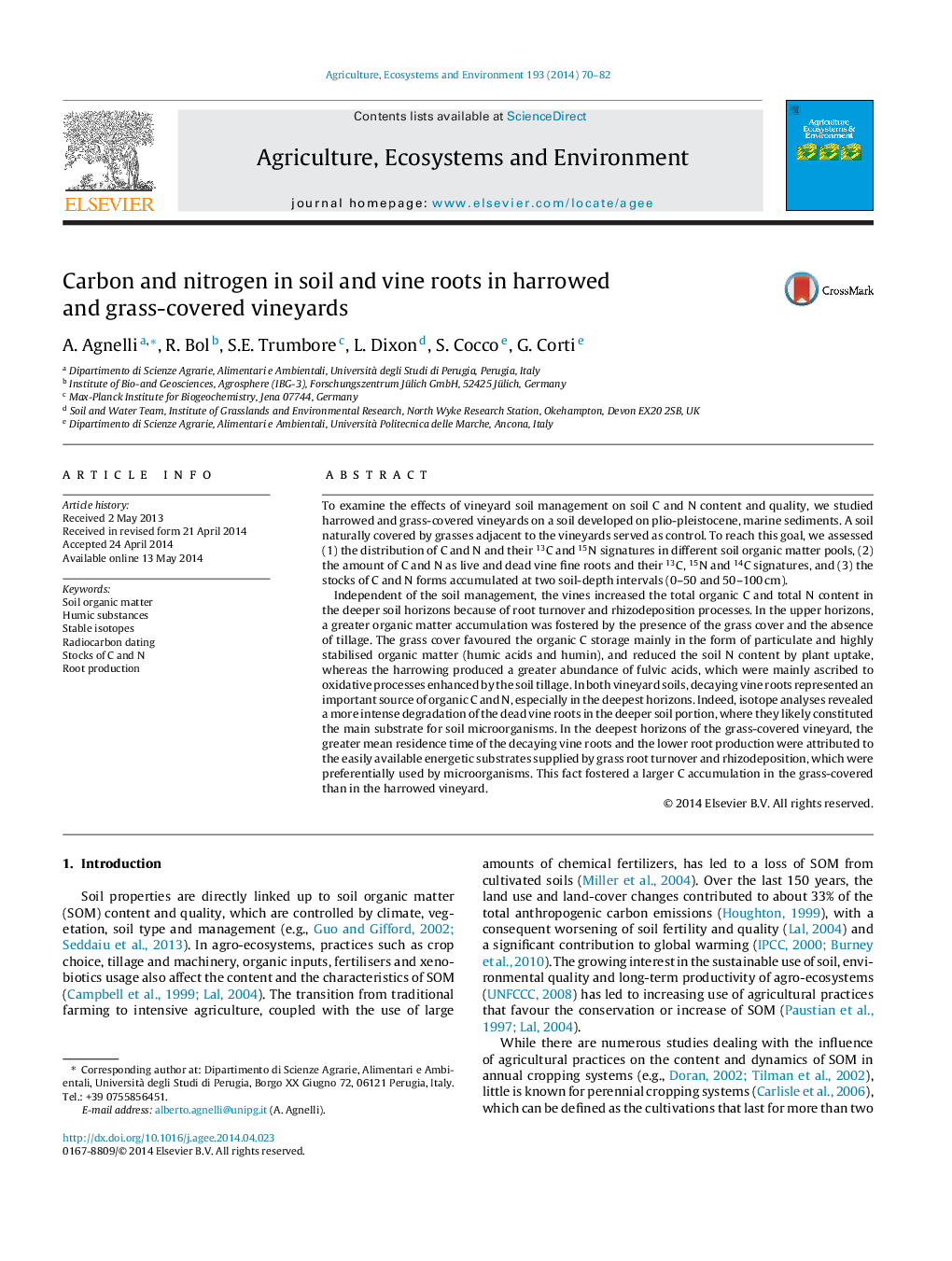| کد مقاله | کد نشریه | سال انتشار | مقاله انگلیسی | نسخه تمام متن |
|---|---|---|---|---|
| 2413979 | 1552059 | 2014 | 13 صفحه PDF | دانلود رایگان |
• Rhizodeposition and turnover of vine roots are responsible for accumulating C and N at depth.
• The grass-cover of the vineyard alleys favours the accumulation of stabilised soil organic matter.
• In our vineyard soils, fulvic acids represent a degradation product of humic acids.
• At depth, fine vine roots have longer turnover times in the grass-covered than in the harrowed vineyard soil.
• The vine increases the organic C and total N stock in the deeper layers of vineyard soils.
To examine the effects of vineyard soil management on soil C and N content and quality, we studied harrowed and grass-covered vineyards on a soil developed on plio-pleistocene, marine sediments. A soil naturally covered by grasses adjacent to the vineyards served as control. To reach this goal, we assessed (1) the distribution of C and N and their 13C and 15N signatures in different soil organic matter pools, (2) the amount of C and N as live and dead vine fine roots and their 13C, 15N and 14C signatures, and (3) the stocks of C and N forms accumulated at two soil-depth intervals (0–50 and 50–100 cm).Independent of the soil management, the vines increased the total organic C and total N content in the deeper soil horizons because of root turnover and rhizodeposition processes. In the upper horizons, a greater organic matter accumulation was fostered by the presence of the grass cover and the absence of tillage. The grass cover favoured the organic C storage mainly in the form of particulate and highly stabilised organic matter (humic acids and humin), and reduced the soil N content by plant uptake, whereas the harrowing produced a greater abundance of fulvic acids, which were mainly ascribed to oxidative processes enhanced by the soil tillage. In both vineyard soils, decaying vine roots represented an important source of organic C and N, especially in the deepest horizons. Indeed, isotope analyses revealed a more intense degradation of the dead vine roots in the deeper soil portion, where they likely constituted the main substrate for soil microorganisms. In the deepest horizons of the grass-covered vineyard, the greater mean residence time of the decaying vine roots and the lower root production were attributed to the easily available energetic substrates supplied by grass root turnover and rhizodeposition, which were preferentially used by microorganisms. This fact fostered a larger C accumulation in the grass-covered than in the harrowed vineyard.
Journal: Agriculture, Ecosystems & Environment - Volume 193, 1 August 2014, Pages 70–82
